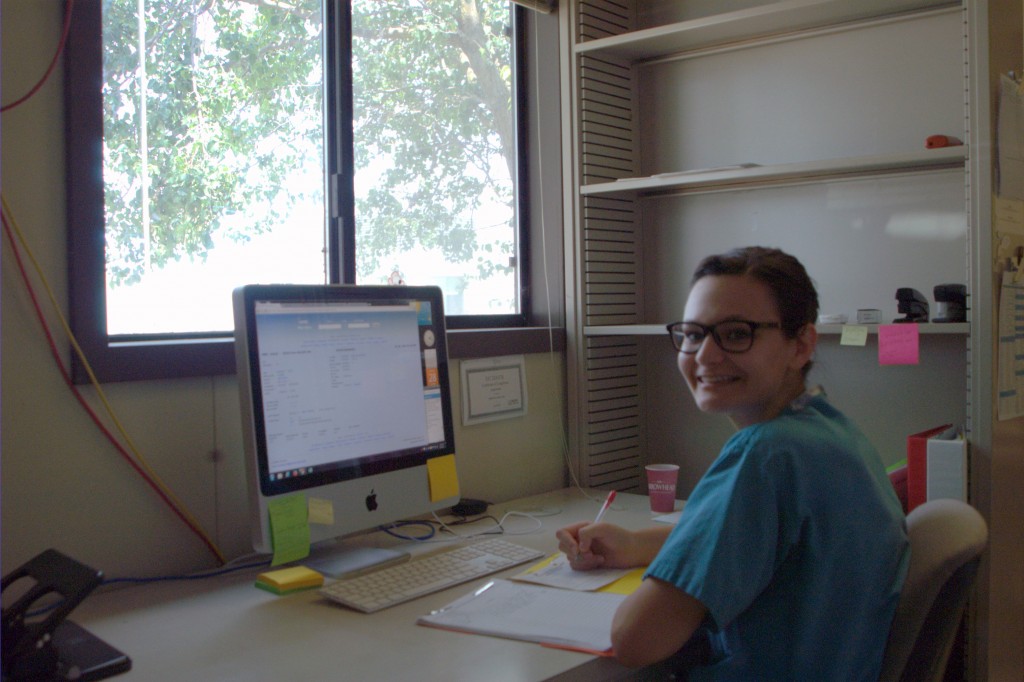I was cautiously hopeful before I arrived at the California National Primate Research Center (CNPRC). It is a biomedical research center that focuses on non-human primate testing. I knew that this would be a great experience for me whether I was put in a more research setting or a more animal care setting, but I had little idea of what my day-to-day experience would be like and was ready for the challenge.
Upon being assigned to the research services department, I immediately volunteered 40 hours a week, and spent most of my time assisting the senior research associates (SRAs). That meant a suitable amount of interaction with the monkeys.
From the beginning, the most positive thing about the internship was the constant willingness of my supervisors to both teach and trust me. I assisted in paperwork on information like weight, vaccinations, pregnancies, and study assignments, and helped sort and file billing for different departments, but I also learned skills directly related to veterinary medicine and practiced them almost daily.
I performed nearly 1000 subcutaneous injections that were mostly related to overall colony health, and performed approximately 200 IM injections. One of the biggest challenges was drawing blood because the animal is not always still, but also because I had to become comfortable with proper syringe techniques and finding a bloodline. My supervisor was especially helpful with this. I also observed animals and helped prepare fresh snacks, fruits, and popsicles for the animals.
One of the most important things that I learned from this internship was to respect all laboratory animals, especially ones as aware as primates. I consider myself to be fairly current on issues discussed by animal rights activists and am a practicing vegetarian. I was apprehensive to take an internship at a laboratory that uses animals for testing, but I was both surprised and impressed by the care the CNPRC provides.
An enrichment team is constantly thinking of new ways to keep the animals’ lives as normal as possible. Most animals are housed outside and and live in large grassy cages that hold an array of ropes and different climbing apparatuses. Those inside are paired with another animal when possible, and offered interactive activities like puzzle tubes, long pvc pipes with holes that monkeys have to twist and turn in order to get food out. A behavioral team watches social orders closely, approves moves in and out of the order, and trains animals to be foster parents.
I also learned that there are more facets to veterinary medicine than I thought. While I am still not sure of my own preference, if I was given the chance to go back to the primate center again, I am not sure if I would ever leave. I was honored to be their first real summer intern, and I hope that whoever gets the chance to do it next is able to understand how amazing the place really is.
Editor’s Note: This guest blogger was a 2014 Scripps College Internship Grant recipient. To learn more about the 2015 Internship Grant process, click here. Deadline Feb. 5.


